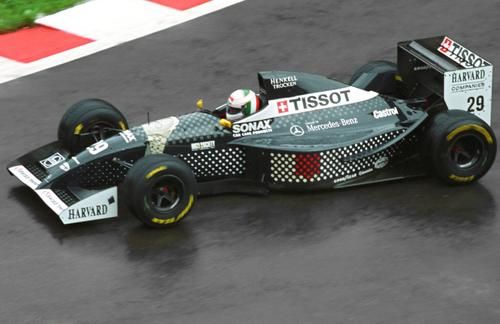This will obviously get messy because raking these liveries is purely subject to taste. No hard feelings fans.
Top 20 Worst Liveries In Formula 1 History (II)
20. 1962 Brabham BT3
Blue and brown (or whatever that is) combination? Seriously? I believe it was made by some Car painting University dropout...
19. 2009 Toyota TF109
Looks like it hit a deer at 200km/h and then the blood dried...
18. 1976 Surtees TS19
I've seen better looking smuggled packs of cigarettes than this paint job...
17. 1992 Arrows A13
Official F1 car of paramedics...
16. 1994 Sauber C13B
What is that on the sides? Braille style?
15. 1974 Brabham BT44
The white masterpiece... It's not even white if you look at it! Leftover paint!?
14. 2007 honda RA107
Save the planet, lose the paint...
13. 1992 Leyton House March
...combining blue with blue since 1992!
12. 1992 Leyton House March
- I have one more colour than you, said the rainbow.
11. 1992 Sauber C12
This funeral hearse needs flowers ASAP!
10. 1985 Alfa 186T
The poor frog is bleeding! Oh wait, that's a painted car? Really?
9. 1995 Simtek
1995 - when MTV began doing stupid things...
8. 1998 Williams FW20
Winfield? This car looks more like FAILFIELD...
7. 1987 AGS JH22
Old school popcorn packaging...
6. 1989 Benetton B189
This parrot can't speak but can roar.
5. 1994 Arrows FA15
This livery reminds of those retarded goalkeeper shirts of the early 90's...
4. 1999 Bar 001
This was way ahead of its time...
3. 1991 Coloni
This is what an accute lack of inspiration looks like...
2. 1992 Brabham BT60
Paris Hilton liked this...
1. 1994 Pacific
I don't know how that guy can stand next to it. Is he blind? My eyes are bleeding!
* * *
There you have it readers! My personal Top 20 of the most hideous painted car in Formula 1 history. 1992 was definitely not the year to watch F1 on TV. Thank God for the black and white option!
What's your Top 5?
!!!Disclaimer: at least two eyes were harmed in the making of this post!!!
























